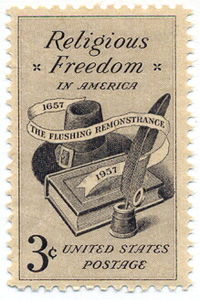The big hoo-hah over Arizona SB 1062 has provided the culture wars with a new conservative meme. Here’s how Ramesh Ponnuru expressed it a few days ago over at National Review Online:
What has changed since 1993 is American liberalism’s view of religious freedom. The RFRA was not something liberals conceded to religious conservatives. It was something they affirmatively sought. Then-representative Chuck Schumer (D., N.Y.) was a sponsor, and Senator Ted Kennedy (D., Mass.) was a strong supporter.
Now liberals regard religious exemptions from laws as suspicious privileges for religious believers.
To refresh memories, “the RFRA” refers to the federal Religious Freedom Restoration Act, a piece of legislation passed overwhelmingly by Congress — with, indeed, the strong support of liberals — and signed into law by President Clinton in 1993. The purpose of the act was to overturn the Supreme Court’s 1990 Smith decision, which declared that a law that was neutral and generally applicable could not be challenged as a violation of one’s constitutional right to religious free exercise.
After the Court found RFRA unconstitutional with respect to state laws in 1997, many states passed their own RFRAs. SB 1062 was technically an amendment to the Arizona RFRA — one that would have required individuals suing businesses that discriminated against them on religious grounds to prove that there was a compelling state interest in prohibiting the discrimination.
But much as they love robust RFRAs, today’s conservatives tend to avoid criticizing the Smith decision itself — doubtless because it was the work of their hero Antonin Scalia and was supported by Chief Justice William Rehnquist and the rest of court’s conservatives even as the most liberal justices (Blackmun, Brennan, and Marshall) opposed it. So what was it about Smith that expressed the conservative sensibilities of Scalia et al. at the time?
To Scalia, the judicial status quo ante was faith-based antinominianism, inviting anyone in our increasingly pluralistic society to go to court to claim an exemption from any law on religious grounds. As he wrote:
If the “compelling interest” test is to be applied at all, then, it must be applied across the board, to all actions thought to be religiously commanded. Moreover, if “compelling interest” really means what it says (and watering it down here would subvert its rigor in the other fields where it is applied), many laws will not meet the test. Any society adopting such a system would be courting anarchy, but that danger increases in direct proportion to the society’s diversity of religious beliefs, and its determination to coerce or suppress none of them.
Not that Scalia wanted to do away with every claim to religious exemption. “Values that are protected against government interference through enshrinement in the Bill of Rights are not thereby banished from the political process,” he wrote, meaning that legislatures and popular majorities should decide when and where to accommodate religious behavior that runs afoul of the law. And what of religious minorities powerless to obtain waivers via democratic decision-making?
It may fairly be said that leaving accommodation to the political process will place at a relative disadvantage those religious practices that are not widely engaged in; but that unavoidable consequence of democratic government must be preferred to a system in which each conscience is a law unto itself or in which judges weigh the social importance of all laws against the centrality of all religious beliefs.
In other words, tough noogies. The point is that Smith, at the time, signified conservative judicial frustration with minority religious claims against political decisions expressing societal norms. Liberals supported these claims — i.e. religious liberty — because of their habitual civil libertarian support for the rights of disfavored minorities.
In the two decades since RFRA became law, liberals have in fact not lost their sympathy for those minorities. Witness, for example, their support for the right of Muslims to build mosques — or even for (this week) the right of individuals to decline health insurance on religious grounds. They are, however, profoundly unsympathetic when large and powerful minorities seek to impose their religious preferences on others. It is to this arena that the most important religious liberty cases have migrated today, including not only those involving discrimination against gay couples but also the Affordable Care Act’s contraception mandate.
For conservatives, Scalia’s fear that the “compelling interest” test would create social anarchy has faded into insignificance now that the democratic process is imposing religious burdens on them.
This is not to say that conservative religious bodies didn’t support the original RFRA. But they didn’t see religious freedom threatened then the way they claim it is today. The Catholic bishops conference, for example, only reluctantly joined the pro-RFRA coalition, fearing that if Roe v. Wade were overturned, someone would claim a religious right to abortion. Now that that their ox is being gored, religious liberty has become so important a cause they’ve mounted an annual Fortnight for Freedom on its behalf.






